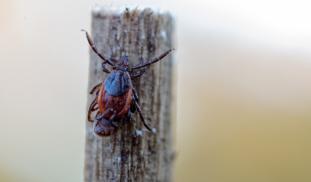Please wait...
About This Project
Despite widespread education about ticks, tickborne disease cases are increasing. TickSpotters, the nation's most established crowdsourced digital surveillance program, tracks tick trends and provides tailored risk and prevention information to the public. Using TickSpotters crowdsourced data, we hypothesize that individualized engagement and personalized public health messages tailored to a person's specific tick encounter will increase adoption of best prevention practices.

Browse Other Projects on Experiment
Related Projects
A sociotechnical toolkit for coral conservation and regeneration
This project aims to develop a sociotechnical toolkit for deploying meaningful biotechnologies in coral...
How does indigenous storytelling communicate best practices for coral reef management on Ulithi Atoll
Coral reef ecosystems are in need of conservation solutions. Indigenous adaptive management, supported by...
How do Black women fishing communities in Ecuador and Madagascar manage mangrove habitats and mitigate climate change?
I'm studying the resilient ways of ILK (indigenous and local knowledge) eco-governance of mangrove habitats...





